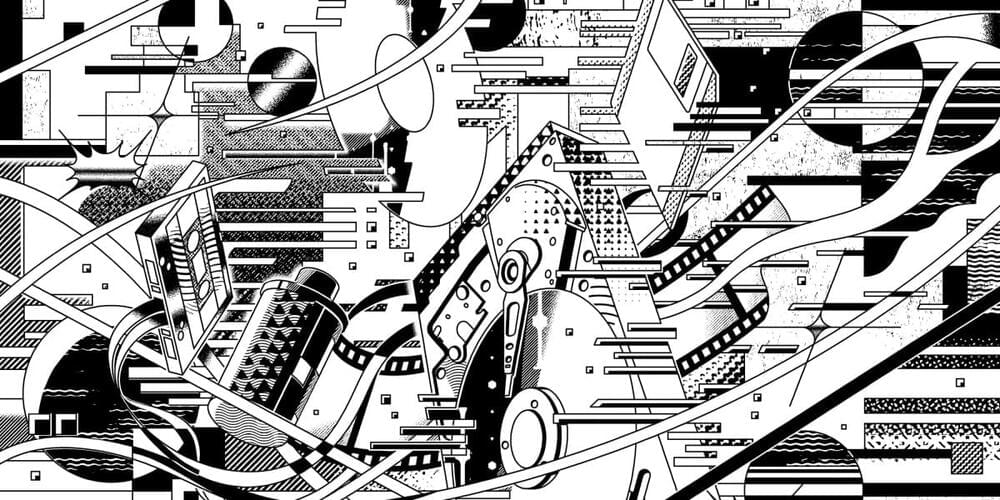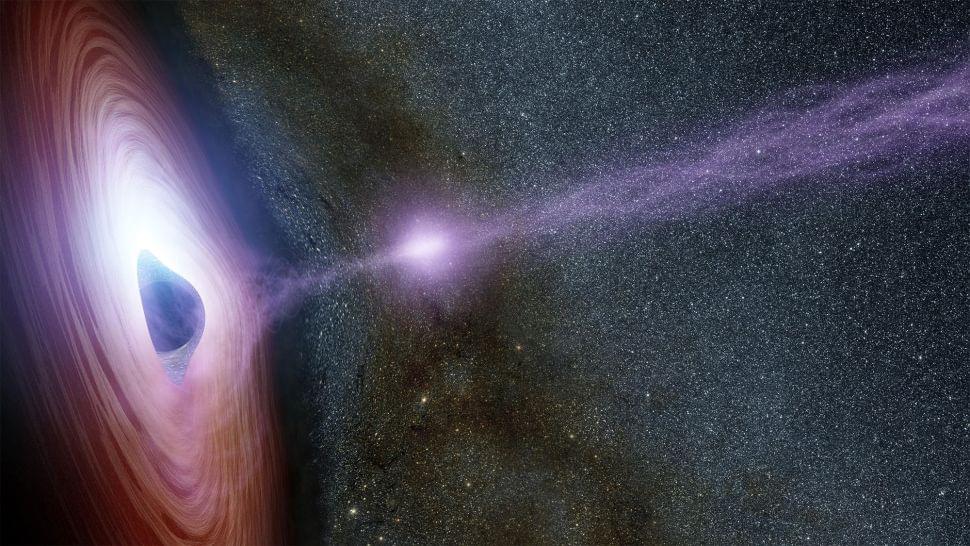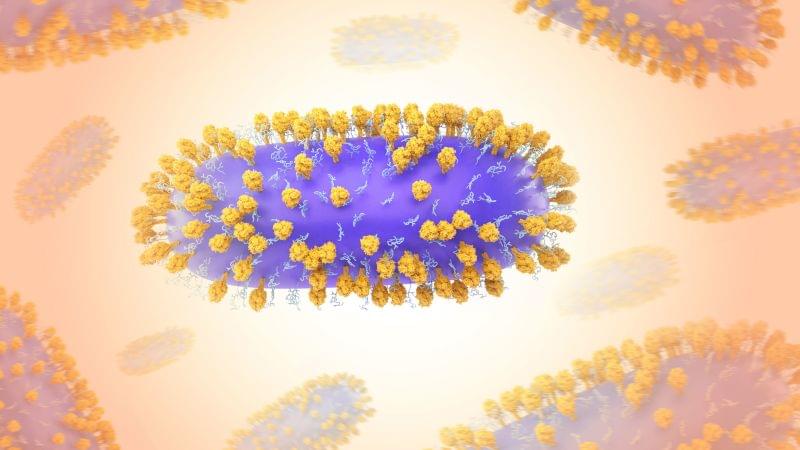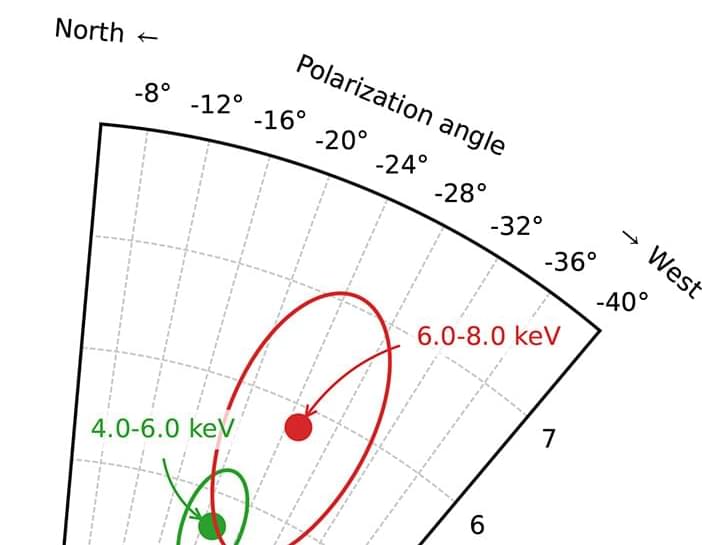Digitization can help stem the tide of entropy, but it won’t stop it.



For those of us who have done a bit of homework on space, and have a basic understanding of the properties of light and gravity, we may feel like have a lot of the answers. These two things have a huge impact on the known universe, as well as our conception of it.
However, the interaction of these two fundamental aspects of space gets a bit confusing.
We have heard adages like nothing can escape the gravitational pull of a black hole, and we often think of black holes as cosmic vacuum cleaners that can suck up entire galaxies and anything else that has mass. We also think of light as being composed of massless photons, and as the fastest-moving thing in the universe – moving at roughly 300,000 km/second.

Pfizer says it has enough promising data on its respiratory syncytial virus, or RSV, vaccine designed to protect newborns that it will end enrollment in the study and submit for US Food and Drug Administration approval by the end of the year.
RSV is a common respiratory virus that typically causes mild, cold-like symptoms, but it can cause serious illness, particularly in older adults and infants. Pfizer’s vaccine candidate is administered to pregnant women who then make antibodies that cross the placenta and protect the baby after birth.
“The [study data monitoring committee] recommended, based on the data that we have, that we should go ahead and file, that this offers the potential for a safe and effective vaccine that could really dramatically help to prevent RSV during the winter season,” Dr. William Gruber, Pfizer’s senior vice president of vaccine clinical research and development, told CNN.
Their research was published Sept. 26 in the journal Optics Express.
The five dimensions in question aren’t new or hidden spatial dimensions. Instead, a team headed by Tingting Wu, a Ph.D. student in the McKelvey School of Engineering’s imaging sciences program, was able to design a system that could tell the orientation of a molecule in 3D space as well as its position in 2D: five parameters from a single, noisy, pixelated image.
Start listening with a 30-day Audible trial and your first audiobook is free. Visit.
http://www.audible.com/isaac or text “isaac” to 500–500.
Our Universe is billions of years older than our planet, and we often contemplate alien civilizations that might have arisen early than us in our galaxy, but just how early could life have arisen?
Visit our Website: http://www.isaacarthur.net.
Support us on Patreon: https://www.patreon.com/IsaacArthur.
Facebook Group: https://www.facebook.com/groups/1583992725237264/
Reddit: https://www.reddit.com/r/IsaacArthur/
Twitter: https://twitter.com/Isaac_A_Arthur on Twitter and RT our future content.
SFIA Discord Server: https://discord.gg/53GAShE
Listen or Download the audio of this episode from Soundcloud:
Episode’s Audio-only version: https://soundcloud.com/isaac-arthur-148927746/civilizations-…ng-of-time.
Episode’s Narration-only version: https://soundcloud.com/isaac-arthur-148927746/civilizations-…ation-only.
Credits:
Civilizations at the Beginning of Time.
Science & Futurism with Isaac Arthur.
Episode 272; January 7, 2021
Produced, Written, and Narrated by Isaac Arthur.
Editors:
Jason Burbank.
Jerry Guern https://www.youtube.com/watch?v=mxgArWbEhZg.
Keith Blockus.
Cover Art:


O.o!!!
A black hole x-ray binary (XRB) system forms when gas is stripped from a normal star and accretes onto a black hole, which heats the gas sufficiently to emit x-rays. We report a polarimetric observation of the XRB Cygnus X-1 using the Imaging X-ray Polarimetry Explorer. The electric field position angle aligns with the outflowing jet, indicating that the jet is launched from the inner x-ray emitting region. The polarization degree is 4.01 ± 0.20% at 2 to 8 kiloelectronvolts, implying that the accretion disk is viewed closer to edge-on than the binary orbit. The observations reveal that hot x-ray emitting plasma is spatially extended in a plane perpendicular to the jet axis, not parallel to the jet.

Optimus, also known as Tesla Bot, is a general-purpose robotic humanoid under development by Tesla. The first prototype was announced at the company’s Artificial Intelligence (AI) Day event in September 2022!
Music:
The inner sound — jesse gallagher.
Videos:
Taryn Elliott: https://www.pexels.com/video/woman-walking-barefooted-on-the-shore-3327058/
Jill Burrow: https://www.pexels.com/video/hand-with-manicured-nails-on-da…d-7665245/
Large Language Models have the ability to store vast amounts of facts about the world. But little is known, how these models actually do this. This paper aims at discovering the mechanism and location of storage and recall of factual associations in GPT models, and then proposes a mechanism for the targeted editing of such facts, in form of a simple rank-one update to a single MLP layer. This has wide implications both for how we understand such models’ inner workings, and for our ability to gain greater control over such models in the future.
OUTLINE:
0:00 — Introduction.
1:40 — What are the main questions in this subfield?
6:55 — How causal tracing reveals where facts are stored.
18:40 — Clever experiments show the importance of MLPs.
24:30 — How do MLPs store information?
29:10 — How to edit language model knowledge with precision?
36:45 — What does it mean to know something?
39:00 — Experimental Evaluation & the CounterFact benchmark.
45:40 — How to obtain the required latent representations?
51:15 — Where is the best location in the model to perform edits?
58:00 — What do these models understand about language?
1:02:00 — Questions for the community.
Paper: https://arxiv.org/abs/2202.05262
Follow-up paper on Mass-Editing Memory in a Transformer: https://arxiv.org/abs/2210.
Abstract:
We analyze the storage and recall of factual associations in autoregressive transformer language models, finding evidence that these associations correspond to localized, directly-editable computations. We first develop a causal intervention for identifying neuron activations that are decisive in a model’s factual predictions. This reveals a distinct set of steps in middle-layer feed-forward modules that mediate factual predictions while processing subject tokens. To test our hypothesis that these computations correspond to factual association recall, we modify feed-forward weights to update specific factual associations using Rank-One Model Editing (ROME). We find that ROME is effective on a standard zero-shot relation extraction (zsRE) model-editing task, comparable to existing methods. To perform a more sensitive evaluation, we also evaluate ROME on a new dataset of counterfactual assertions, on which it simultaneously maintains both specificity and generalization, whereas other methods sacrifice one or another. Our results confirm an important role for mid-layer feed-forward modules in storing factual associations and suggest that direct manipulation of computational mechanisms may be a feasible approach for model editing. The code, dataset, visualizations, and an interactive demo notebook are available at this https URL
Authors: Kevin Meng, David Bau, Alex Andonian, Yonatan Belinkov.
Links: